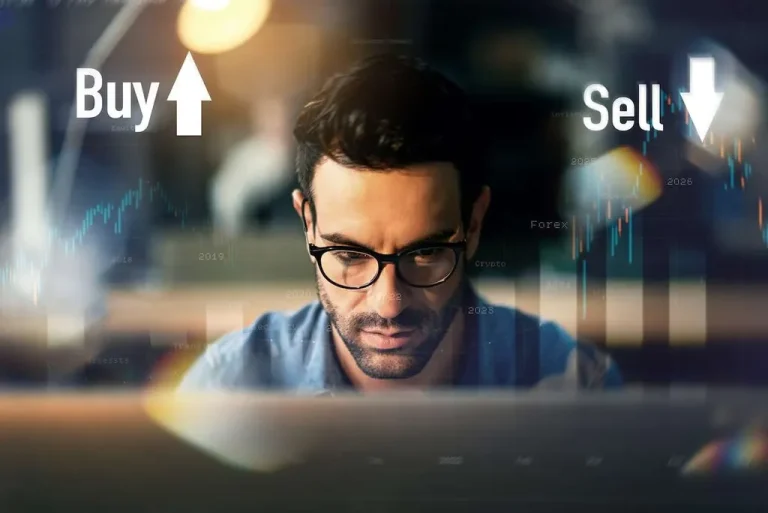Content
For instance, if a bullish gap is filled and then turns into a bearish gap, this inversion can signal a change in market sentiment, prompting traders to adjust their strategies accordingly. In times of macro uncertainty liquidity dries up on overall markets causing higher volatility, often led to the downside. In this article we will look both from a macro-perspective and a market microstructure perspective on the aspects https://www.xcritical.com/ of liquidity shortages.
Can Buy-Side and Sell-Side Analysts Work at the Same Company?
JP Morgan Chase and Bank of America, which combine commercial and investment banks under a single holding company, underwrite and manage bond issues. The investment banks are very active, both trading and taking positions in the bond market. It shows how liquidity affects short-term and uncertain what is buy side liquidity markets, making it easier to buy or sell a stock.
SMC & ICT: Guide to Trade with Smart Money
These zones are considered as attractive zone for entering buy positions. Buy-side players in the public market include money managers at hedge funds, institutional firms, mutual funds, and pension funds. In the private market, private equity funds, VC funds, and venture arms of corporations investing in startups are on the buy-side. On the sell-side of the equation are the market makers who are the driving force of the financial market. For example, any individual or firm that purchases stock to sell it later at a profit is from the buy-side. Individual traders can identify and trade with big players by analyzing market liquidity, price action, and volume data.
What is Buy Side Liquidity Forex?
Meanwhile, a buy-side analyst typically works for institutional investors like hedge funds, pension funds, or mutual funds. These analysts conduct research and advise the money managers within their funds. Market depth plays a crucial role in liquidity provision and market dynamics. It determines the ease with which securities can be traded and affects market volatility and stability. Market depth can vary by security and can be improved through various strategies such as encouraging more liquidity providers to enter the market or increasing market transparency. It is essential for market participants to understand the importance of market depth and its impact on trading and investing decisions.
How to Use Liquidity Levels in Trading
- The business that the investment bank has offered the wealthy individual is considered the sell-side of the business as it is selling to the client services and financial products.
- Institutional investors value one-on-one meetings with company management and will reward those analysts who arrange those meetings.
- Occasionally, sell-side analysts fail to revise their estimates, but their expectations do change.
- Financial analysts also conduct detailed financial modeling to predict future performance, analyze financial statements, and track economic trends.
- Analysts may also work with corporate executives, industry experts, and economists to gather diverse kinds of information and data.
- Market makers are financial institutions that provide liquidity to the market by buying and selling securities.
- That could be the reason when market collects sell side liquidity, they drive the price higher in order to accumulate sell orders and expect lower prices in future.
This is especially important in markets where there may not be a lot of trading activity, as market makers can help determine the true value of these securities. In a liquidity sweep, price targets areas with a high concentration of stop-loss orders or pending trades. Once liquidity is captured, often through a temporary break of a support or resistance level, the market reverses as smart money or institutional traders enter their positions. SMC and ICT traders use such concepts within a price range to look for potential opportunities.
One potential solution is to impose stricter regulations on HFT firms to prevent predatory trading practices and ensure that they are contributing to market liquidity in a positive way. Additionally, market participants can work together to develop new technologies and trading strategies that take advantage of HFT’s benefits while minimizing its drawbacks. While HFT has its benefits, there are also several drawbacks that can impact market liquidity. For one, HFT firms often rely on algorithms to execute trades, which can lead to sudden and unpredictable shifts in market behavior. This can cause liquidity to dry up quickly, making it harder for other traders to buy or sell assets. Additionally, HFT firms may engage in predatory trading practices, such as front-running or spoofing, which can harm market liquidity by discouraging other traders from participating in the market.
Since the deal is financed or leveraged, it’s known as a leveraged buyout. Companies can borrow as much as 90% of the equity needed for the deal, putting up as little as 10% of the deal price. In contrast, the buy-side focuses on purchasing and investing in large quantities of securities, typically for fund management purposes. The objective is to generate investment returns and manage client portfolios, including hedge, pension, and mutual funds. The individual takes on the business of the investment bank, paying it commissions and fees for managing his money.
Dark pools are private trading venues that allow investors and traders to buy and sell securities without revealing their orders to the wider market. While dark pools can provide a level of anonymity and reduce market impact for large trades, they can also reduce transparency and limit market depth. Market makers are financial institutions that provide liquidity to the market by buying and selling securities. They do this by quoting both a bid price (the price at which they are willing to buy securities) and an ask price (the price at which they are willing to sell securities).

Market makers provide bid and ask prices for securities, which are the prices at which they are willing to buy and sell. By doing so, they create a market for these securities and make it easier for buyers and sellers to transact. This is especially important in markets where there may not be a lot of buyers or sellers, as market makers can step in and provide liquidity. Advances in technology have had a significant impact on sell-side liquidity provision. Electronic trading platforms have made it easier for market makers to provide liquidity to the market by automating the process of quoting bid and ask prices. This has led to increased competition among market makers, which has resulted in lower bid-ask spreads and improved market liquidity.
In trading market context, liquidity refers to how easily an asset can be bought or sold without significantly affecting its price. On the other hand, Canwell said there are nuances of trading with a market marker – whether that’s direct or through an agency broker. “If you are a passive buy-side firm, you could potentially be detrimentally treated because there is a more aggressive client in the same flow,” he said. They underwrite stock issuance, take proprietary positions, and sell to both institutional and individual investors. One of the most high-profile activities of the sell-side in the stock market is in initial public offerings (IPOs) of stocks. Underwriters are typically brokers, who act as a buffer between companies and the investing public, and who market and sell those initial shares.
Institutions often accumulate orders at critical price points, thereby manipulating the currency’s supply and demand and driving market prices. Their activity can lead to price slippage and impact the overall flow of the Forex markets, both on the buy and sell side. Liquidity pools in Forex trading refer to areas within the market that hold substantial order volumes. These concentrations of open trades, when activated, can lead to significant price movements, both advantageous and perilous for traders. Swift engagements with liquidity pools might trigger immediate price slippage, hence altering trade outcomes. The Forex landscape is continually shaped by the entities that drive the market’s liquidity.

The buy-side of the capital markets consists of professionals and investors with funds available to purchase securities. These securities can range from common and preferred shares to bonds, derivatives, and other financial spin-offs issued by the sell-side entities. The sell-side of the financial market is responsible for creating, promoting, and selling traded securities to the general public. This helps generate liquidity by ensuring the availability of trades for distribution and facilitating the exchange of financial assets. Sell-side is the part of the financial industry that is involved with the creation, promotion, and sale of stocks, bonds, foreign exchange, and other financial instruments to the public market. The sell-side can also include private capital market instruments such as private placements of debt and equity.
They provide liquidity to the market, which facilitates trading and ensures that assets can be bought or sold quickly and efficiently. They also help to stabilize the market by providing liquidity during times of market stress. Sell-side liquidity provision has a significant impact on market dynamics. It affects the price of assets, the volume of trading, and the overall stability of the market.
While accuracy is essential, sell-side analysis often generates trading activity and client interest. Their reports might be more frequent and cover a broader range of securities but may not always be as detailed as buy-side research. A wealthy individual worth millions of dollars is looking to invest a significant portion of his capital. Recognizing supply and demand dynamics and acknowledging the influence of institutional investors enhances traders’ confidence, particularly in hard-to-read markets. Traders can look for setups supporting the ongoing trend when the price exceeds important liquidity levels. It’s crucial to note that buy-side liquidity refers to a certain level on the chart.
Market makers swept the old highs clearing buy side liquidity, moved the market down (against the pending orders) a perfect example of buyside liquidity hunt. Buy Side Liquidity according to the inner circle trader (ICT) is the volume of pending buy orders (Buy Stops). After studying this article and practicing in the markets, you will be able to spot resting liquidity in the market like a pro. It’s generally safe to assume that you can make more on the buy side, but don’t underestimate the ability of a rainmaker investment banker on the sell-side to earn massive amounts of money. Sell-side jobs also have performance bonuses, which can be based on both personal performance, as well as on the performance of the firm. There are unique characteristics to understand the buy side vs sell side.